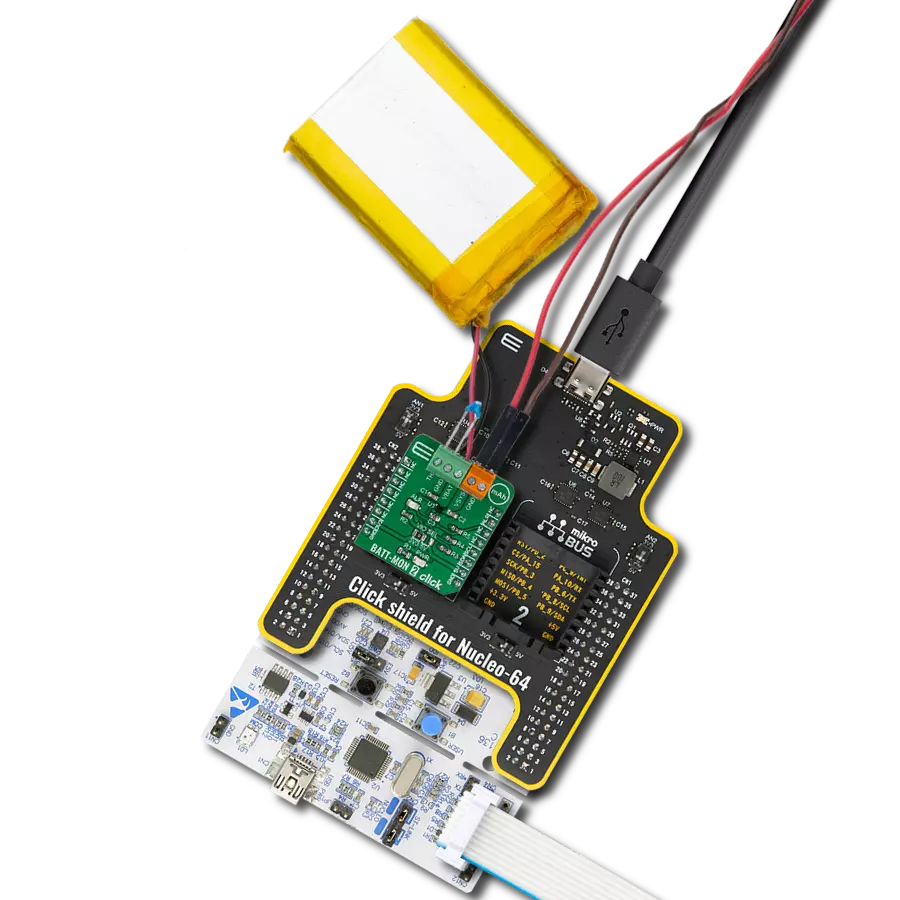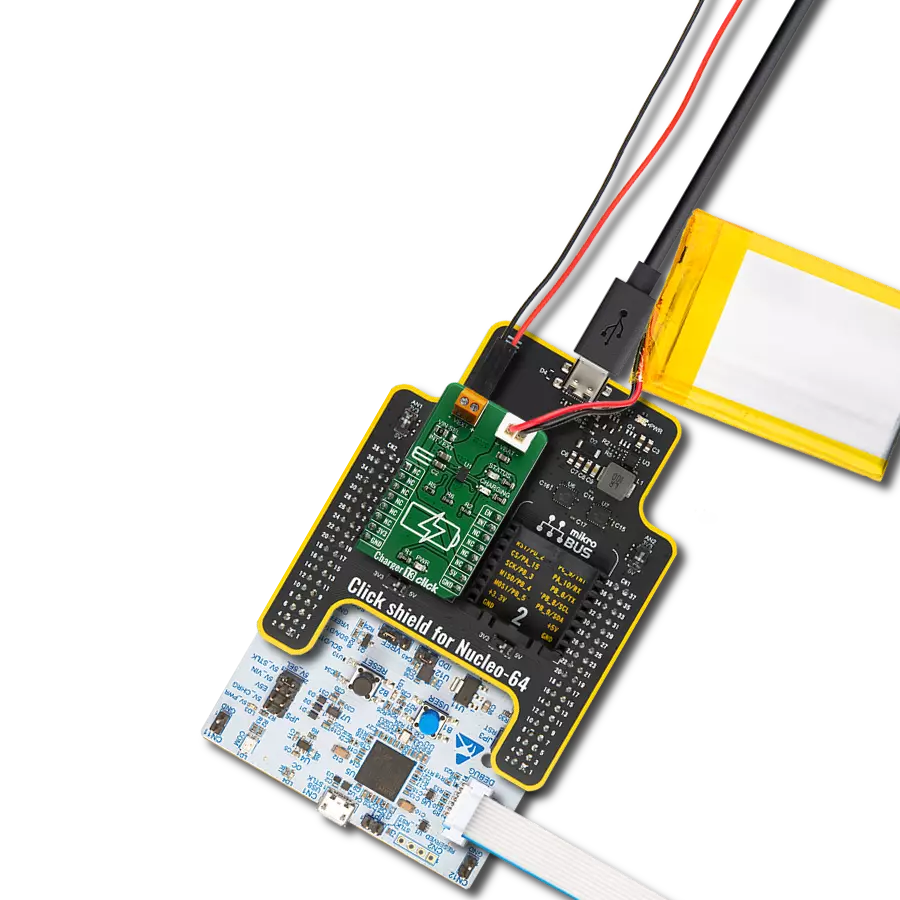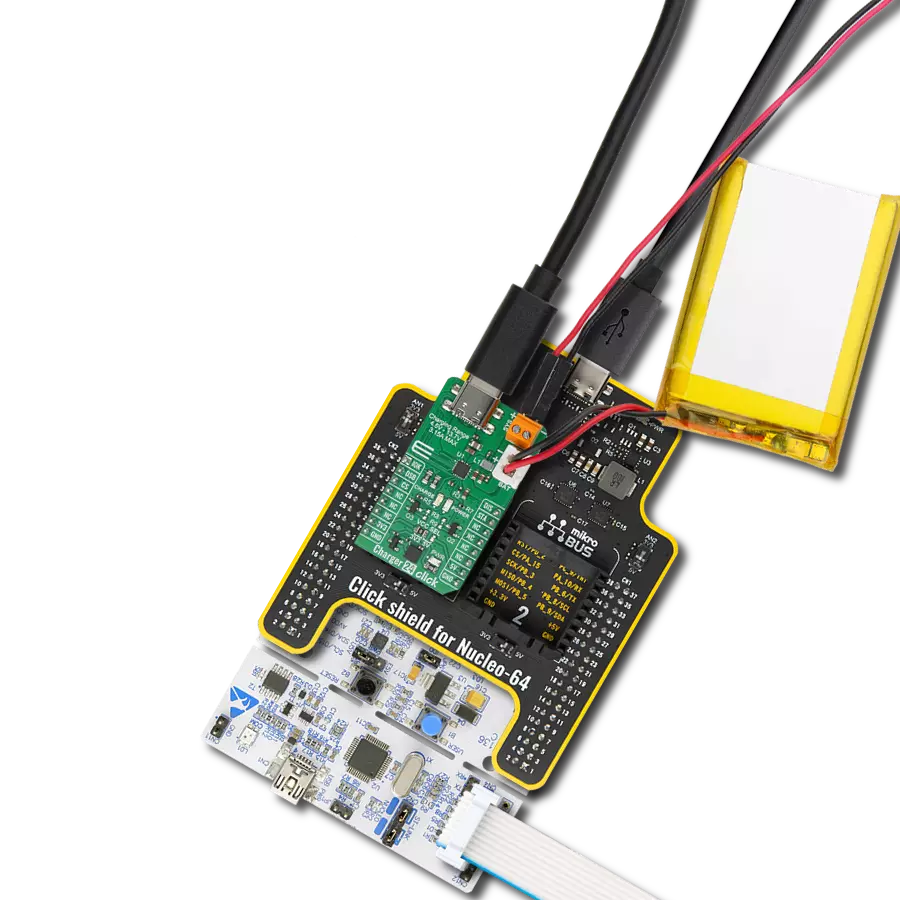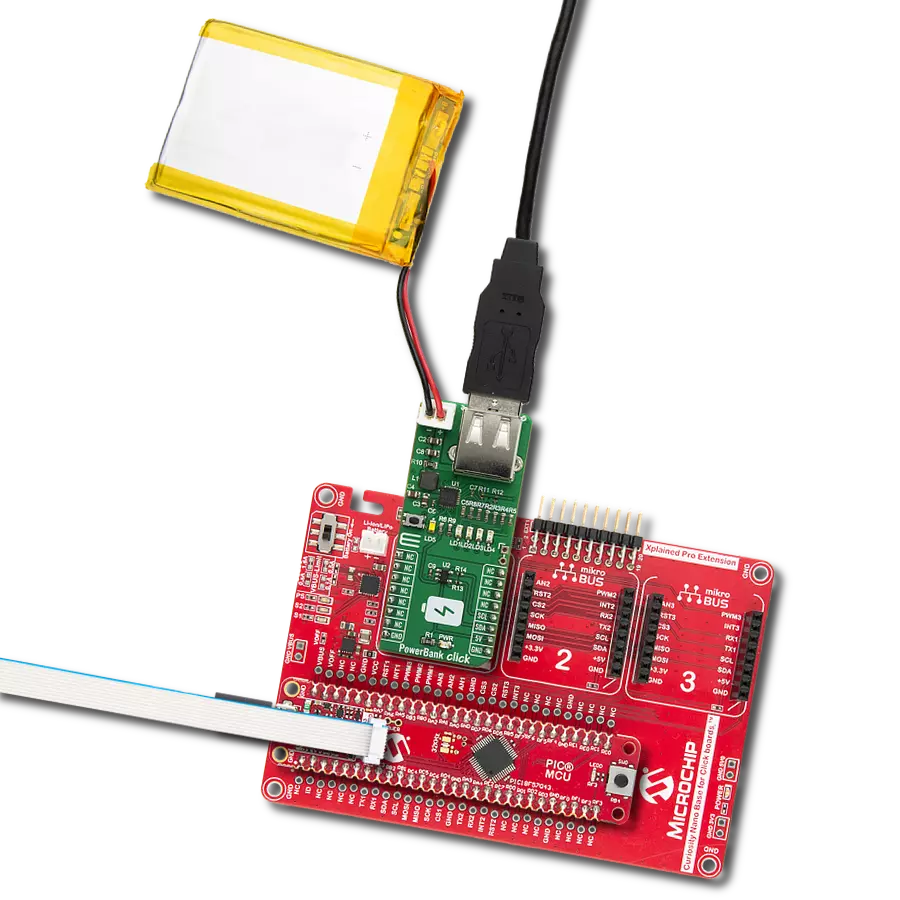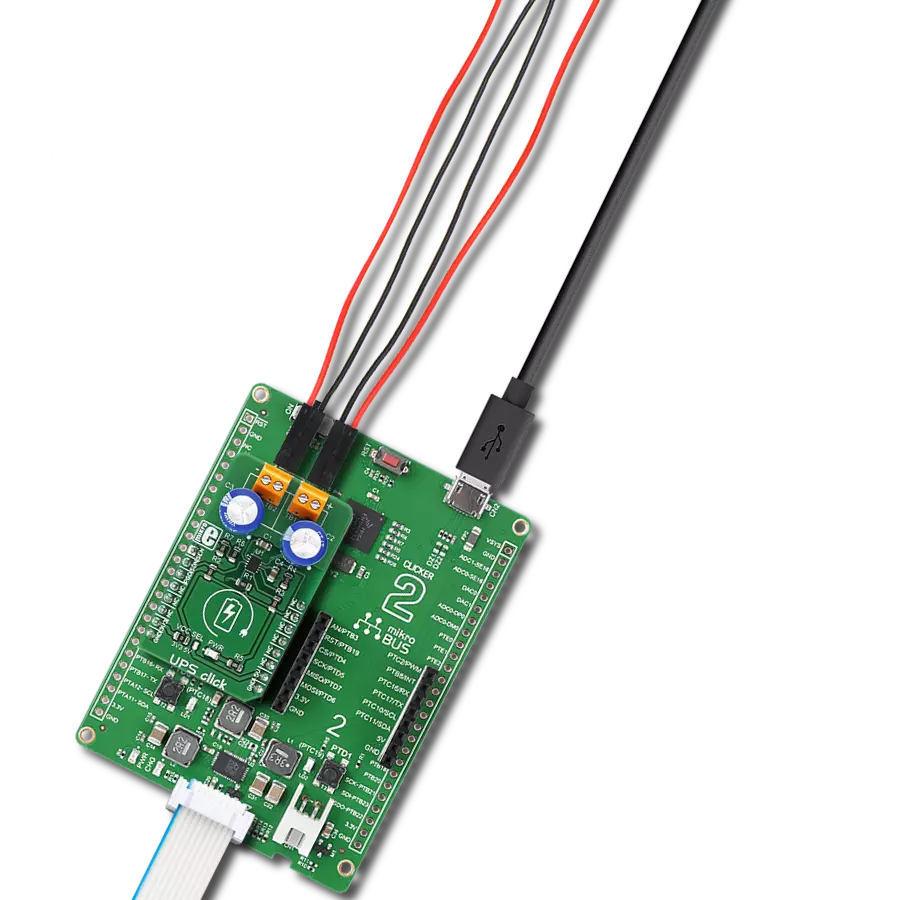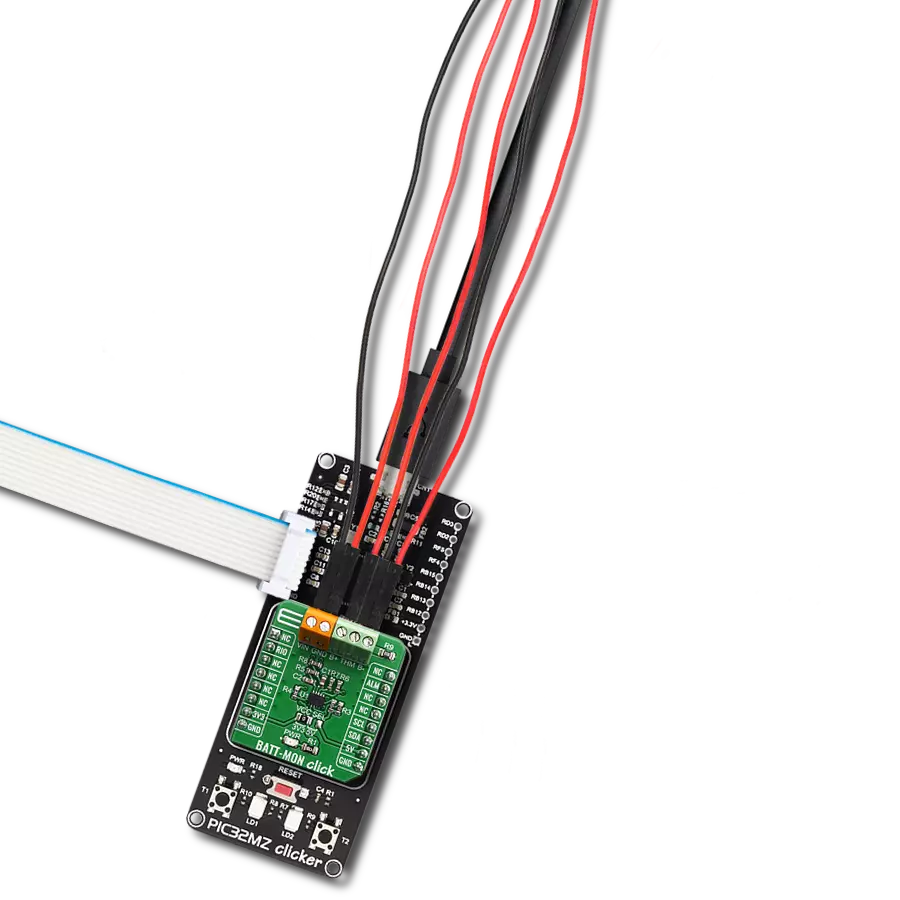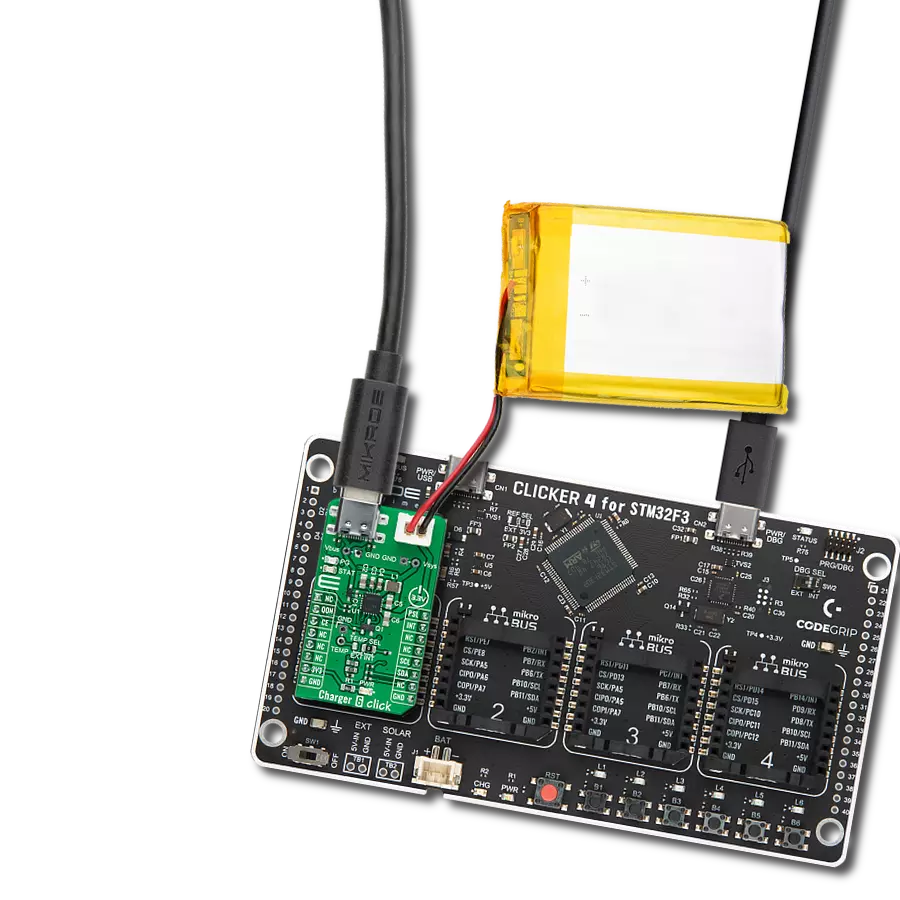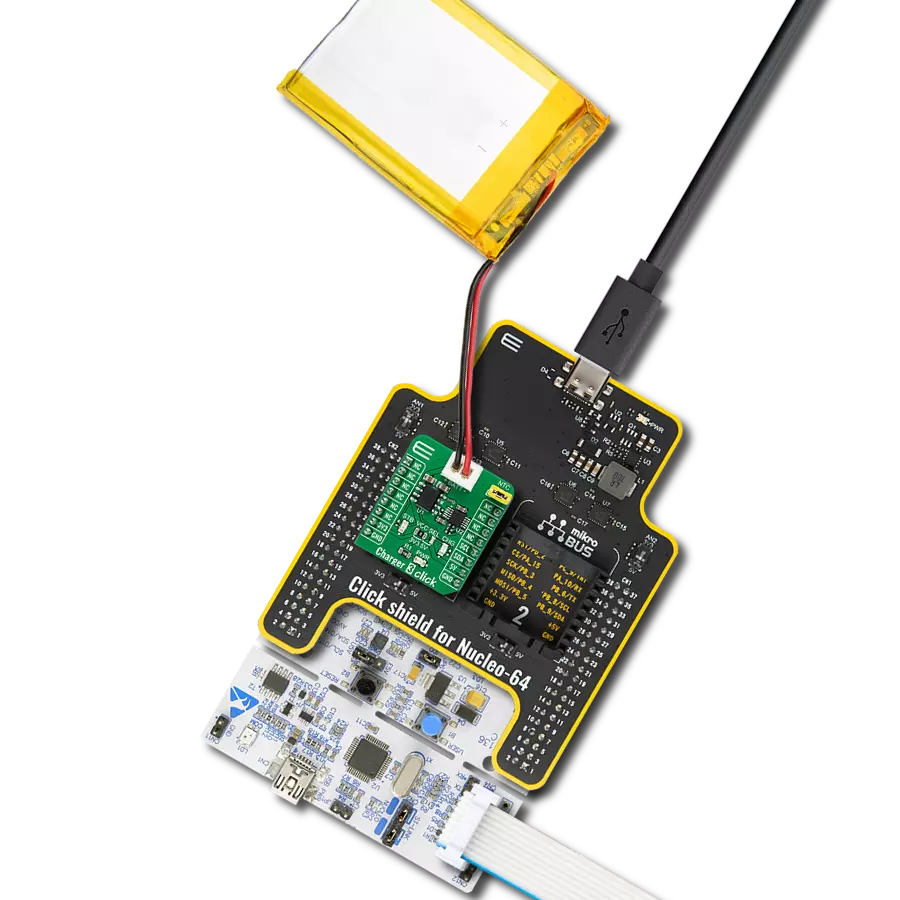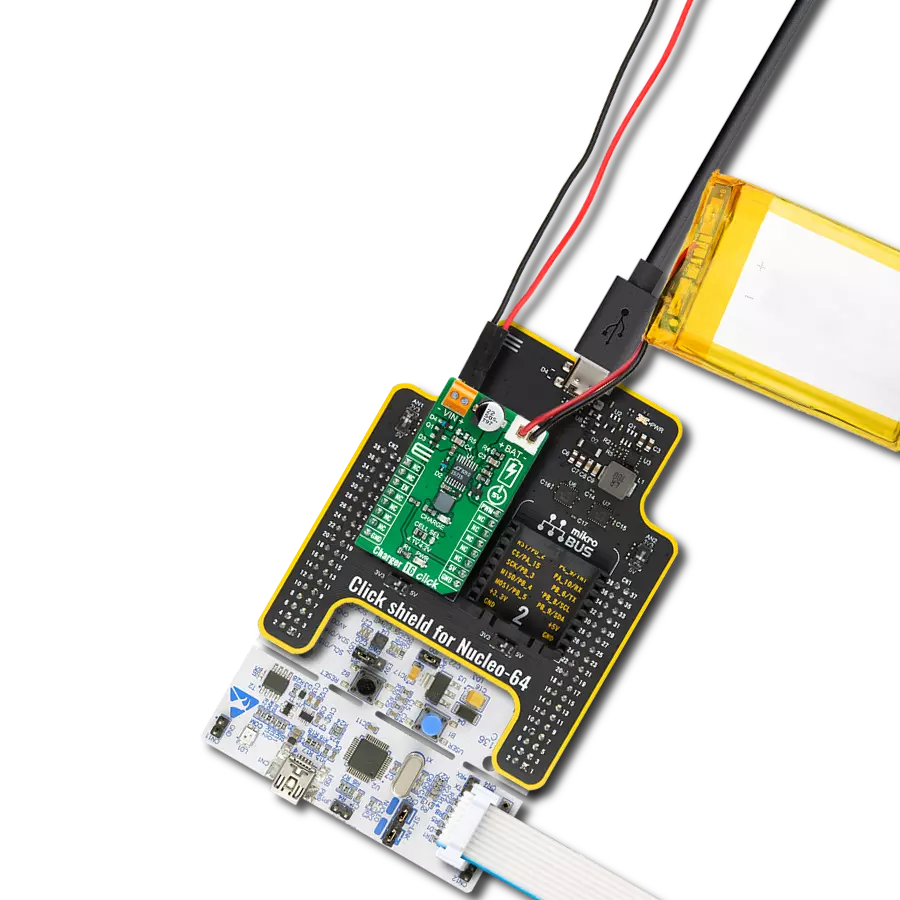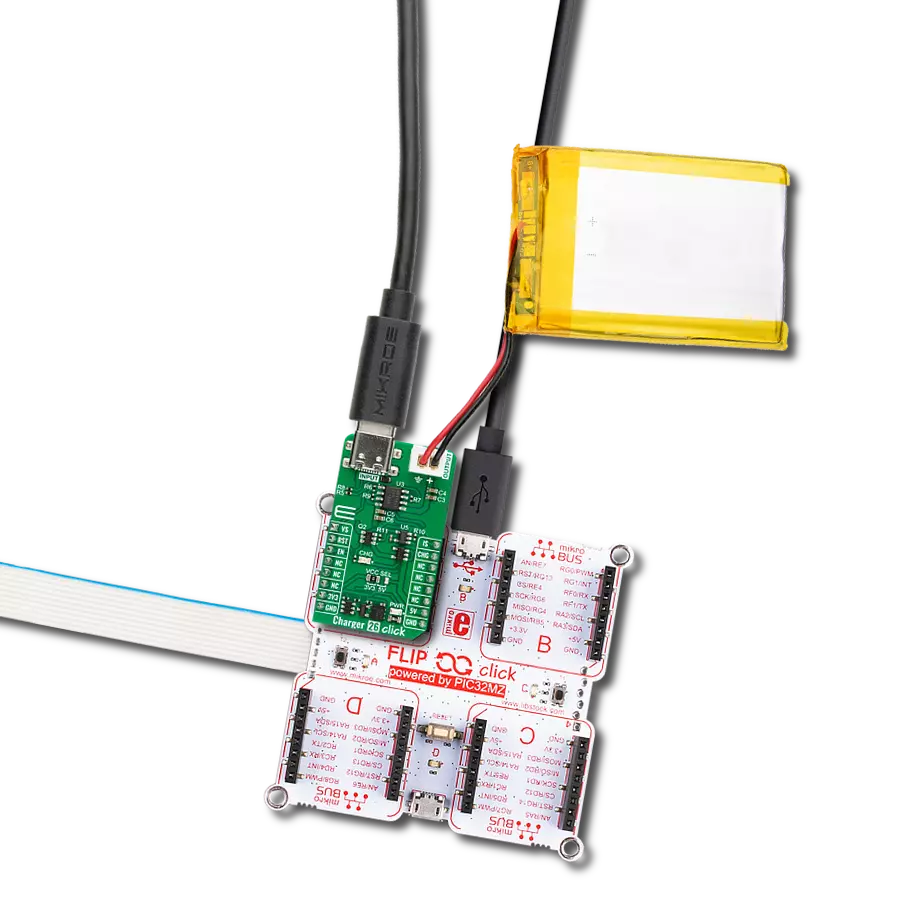Monitors the state and health of your single-cell battery
A
A
Hardware Overview
How does it work?
BATT-MON 2 Click is based on the MAX17262, an ultra-low power fuel-gauge IC that implements the ModelGauge™ m5 algorithm from Analog Devices. It provides, at the same time, tolerance against battery diversity for most lithium batteries (providing good performance for most cell types) and applications. The MAX17262 features internal current measurement for up to 3.1A pulse currents and accurately measures voltage, current, and temperature to produce fuel gauge results. It shows the best performance for batteries with 100mAhr to 6Ahr capacity. The ModelGauge™ m5 EZ algorithm combines a Coulomb counter's short-term accuracy and linearity with the long-term stability of a voltage-based fuel gauge, along with temperature compensation, to provide industry-leading fuel-gauge accuracy.
The MAX17262 automatically compensates for cell aging, temperature, and discharge rate, providing accurate state-of-charge in percentage (%) and remaining capacity in milliampere-hours (mAh) over a wide range of operating conditions. As the battery approaches the critical region near empty, the ModelGauge™ m5 algorithm invokes a unique correction mechanism that eliminates errors. The MAX17262 accurately estimates time-to-empty and time-to-full through three methods for reporting the battery age: reduction in capacity, increase in battery resistance and cycle odometer. BATT-MON 2 Click communicates with MCU using the standard I2C 2-Wire interface to read data and configure settings with a maximum frequency of 400kHz. An alert/interrupt function is also available that outputs an interrupt signal
to the ALR pin of the mikroBUS™ socket, indicating fuel-gauge alerts. This feature is visually presented by a red LED marked as ALR. Besides, this Click board™ also features battery pack temperature sensing through an integrated temperature sensor or an external NTC thermistor which can be connected to the onboard terminal labeled TH. This Click board™ can operate with either 3.3V or 5V logic voltage levels selected via the VIO SEL jumper. This way, both 3.3V and 5V capable MCUs can use the communication lines properly. However, the Click board™ comes equipped with a library containing easy-to-use functions and an example code that can be used, as a reference, for further development.
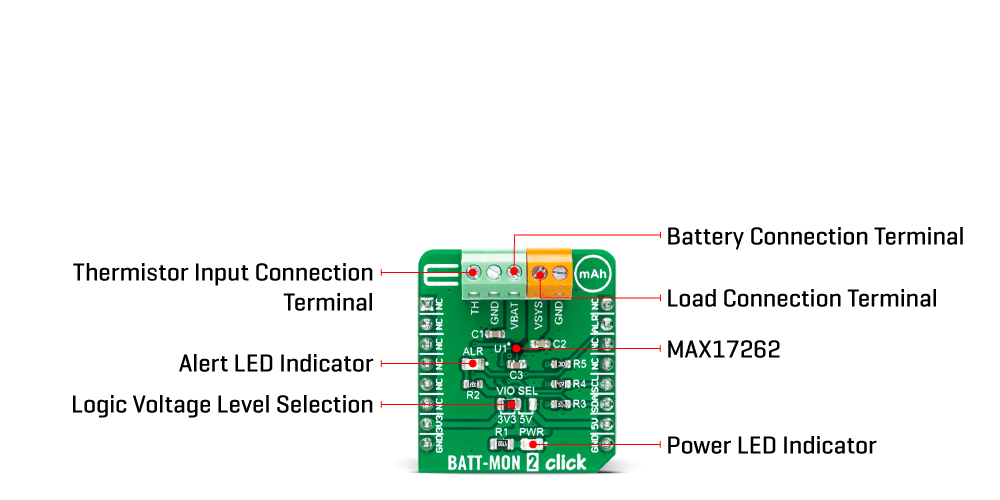
Features overview
Development board
Nucleo-64 with STM32F091RC MCU offers a cost-effective and adaptable platform for developers to explore new ideas and prototype their designs. This board harnesses the versatility of the STM32 microcontroller, enabling users to select the optimal balance of performance and power consumption for their projects. It accommodates the STM32 microcontroller in the LQFP64 package and includes essential components such as a user LED, which doubles as an ARDUINO® signal, alongside user and reset push-buttons, and a 32.768kHz crystal oscillator for precise timing operations. Designed with expansion and flexibility in mind, the Nucleo-64 board features an ARDUINO® Uno V3 expansion connector and ST morpho extension pin
headers, granting complete access to the STM32's I/Os for comprehensive project integration. Power supply options are adaptable, supporting ST-LINK USB VBUS or external power sources, ensuring adaptability in various development environments. The board also has an on-board ST-LINK debugger/programmer with USB re-enumeration capability, simplifying the programming and debugging process. Moreover, the board is designed to simplify advanced development with its external SMPS for efficient Vcore logic supply, support for USB Device full speed or USB SNK/UFP full speed, and built-in cryptographic features, enhancing both the power efficiency and security of projects. Additional connectivity is
provided through dedicated connectors for external SMPS experimentation, a USB connector for the ST-LINK, and a MIPI® debug connector, expanding the possibilities for hardware interfacing and experimentation. Developers will find extensive support through comprehensive free software libraries and examples, courtesy of the STM32Cube MCU Package. This, combined with compatibility with a wide array of Integrated Development Environments (IDEs), including IAR Embedded Workbench®, MDK-ARM, and STM32CubeIDE, ensures a smooth and efficient development experience, allowing users to fully leverage the capabilities of the Nucleo-64 board in their projects.
Microcontroller Overview
MCU Card / MCU
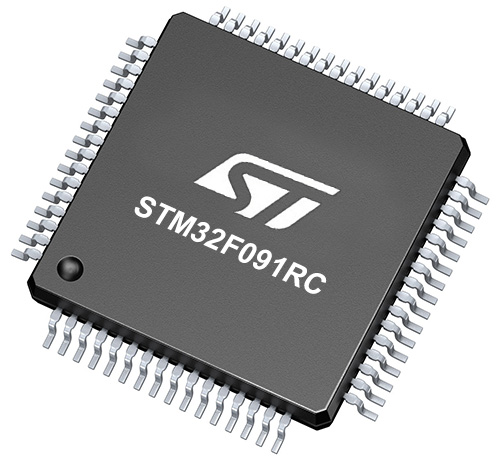
Architecture
ARM Cortex-M0
MCU Memory (KB)
256
Silicon Vendor
STMicroelectronics
Pin count
64
RAM (Bytes)
32768
You complete me!
Accessories
Click Shield for Nucleo-64 comes equipped with two proprietary mikroBUS™ sockets, allowing all the Click board™ devices to be interfaced with the STM32 Nucleo-64 board with no effort. This way, Mikroe allows its users to add any functionality from our ever-growing range of Click boards™, such as WiFi, GSM, GPS, Bluetooth, ZigBee, environmental sensors, LEDs, speech recognition, motor control, movement sensors, and many more. More than 1537 Click boards™, which can be stacked and integrated, are at your disposal. The STM32 Nucleo-64 boards are based on the microcontrollers in 64-pin packages, a 32-bit MCU with an ARM Cortex M4 processor operating at 84MHz, 512Kb Flash, and 96KB SRAM, divided into two regions where the top section represents the ST-Link/V2 debugger and programmer while the bottom section of the board is an actual development board. These boards are controlled and powered conveniently through a USB connection to program and efficiently debug the Nucleo-64 board out of the box, with an additional USB cable connected to the USB mini port on the board. Most of the STM32 microcontroller pins are brought to the IO pins on the left and right edge of the board, which are then connected to two existing mikroBUS™ sockets. This Click Shield also has several switches that perform functions such as selecting the logic levels of analog signals on mikroBUS™ sockets and selecting logic voltage levels of the mikroBUS™ sockets themselves. Besides, the user is offered the possibility of using any Click board™ with the help of existing bidirectional level-shifting voltage translators, regardless of whether the Click board™ operates at a 3.3V or 5V logic voltage level. Once you connect the STM32 Nucleo-64 board with our Click Shield for Nucleo-64, you can access hundreds of Click boards™, working with 3.3V or 5V logic voltage levels.
Li-Polymer Battery is the ideal solution for devices that demand a dependable and long-lasting power supply while emphasizing mobility. Its compatibility with mikromedia boards ensures easy integration without additional modifications. With a voltage output of 3.7V, the battery meets the standard requirements of many electronic devices. Additionally, boasting a capacity of 2000mAh, it can store a substantial amount of energy, providing sustained power for extended periods. This feature minimizes the need for frequent recharging or replacement. Overall, the Li-Polymer Battery is a reliable and autonomous power source, ideally suited for devices requiring a stable and enduring energy solution. You can find a more extensive choice of Li-Polymer batteries in our offer.
Used MCU Pins
mikroBUS™ mapper
Take a closer look
Click board™ Schematic

Step by step
Project assembly
Software Support
Library Description
This library contains API for BATT-MON 2 Click driver.
Key functions:
battmon2_get_battery_voltageThis function reads the battery voltage in mV.battmon2_get_battery_currentThis function reads the battery current in mA.battmon2_get_battery_percentageThis function reads the battery's remaining SOC percentage.
Open Source
Code example
The complete application code and a ready-to-use project are available through the NECTO Studio Package Manager for direct installation in the NECTO Studio. The application code can also be found on the MIKROE GitHub account.
/*!
* @file main.c
* @brief BATTMON2 Click example
*
* # Description
* This example demonstrates the use of BATT-MON 2 Click board by monitoring
* the measurements of battery voltage, current, capacity, percentage, time-to-empty or time-to-full,
* as well as the chip internal temperature.
*
* The demo application is composed of two sections :
*
* ## Application Init
* Initializes the driver and checks the communication by reading and verifying the device ID.
*
* ## Application Task
* Reads and displays on the USB UART the measurements of battery voltage, current, capacity, percentage,
* time-to-empty or time-to-full, as well as the chip internal temperature approximately once per second.
*
* @author Stefan Filipovic
*
*/
#include "board.h"
#include "log.h"
#include "battmon2.h"
static battmon2_t battmon2;
static log_t logger;
void application_init ( void )
{
log_cfg_t log_cfg; /**< Logger config object. */
battmon2_cfg_t battmon2_cfg; /**< Click config object. */
/**
* Logger initialization.
* Default baud rate: 115200
* Default log level: LOG_LEVEL_DEBUG
* @note If USB_UART_RX and USB_UART_TX
* are defined as HAL_PIN_NC, you will
* need to define them manually for log to work.
* See @b LOG_MAP_USB_UART macro definition for detailed explanation.
*/
LOG_MAP_USB_UART( log_cfg );
log_init( &logger, &log_cfg );
log_info( &logger, " Application Init " );
// Click initialization.
battmon2_cfg_setup( &battmon2_cfg );
BATTMON2_MAP_MIKROBUS( battmon2_cfg, MIKROBUS_1 );
if ( I2C_MASTER_ERROR == battmon2_init( &battmon2, &battmon2_cfg ) )
{
log_error( &logger, " Communication init." );
for ( ; ; );
}
if ( BATTMON2_ERROR == battmon2_check_communication ( &battmon2 ) )
{
log_error( &logger, " Check communication." );
for ( ; ; );
}
log_info( &logger, " Application Task " );
}
void application_task ( void )
{
float voltage, capacity, percentage, current, die_temp;
if ( BATTMON2_OK == battmon2_get_battery_voltage ( &battmon2, &voltage ) )
{
log_printf ( &logger, " Voltage: %.1f mV \r\n", voltage );
}
if ( BATTMON2_OK == battmon2_get_battery_current ( &battmon2, ¤t ) )
{
log_printf ( &logger, " Current: %.1f mA \r\n", current );
}
if ( BATTMON2_OK == battmon2_get_battery_capacity ( &battmon2, &capacity ) )
{
log_printf ( &logger, " Capacity: %.1f mAh \r\n", capacity );
}
if ( BATTMON2_OK == battmon2_get_battery_percentage ( &battmon2, &percentage ) )
{
log_printf ( &logger, " Percentage: %.1f %% \r\n", percentage );
}
if ( current > 0 )
{
uint32_t time_to_full;
if ( BATTMON2_OK == battmon2_get_battery_ttf ( &battmon2, &time_to_full ) )
{
log_printf ( &logger, " Time to full: %uh %umin %usec \r\n", ( uint16_t ) ( time_to_full / 3600 ),
( uint16_t ) ( time_to_full % 3600 ) / 60,
( uint16_t ) ( time_to_full % 60 ) );
}
}
else if ( current < 0 )
{
uint32_t time_to_empty;
if ( BATTMON2_OK == battmon2_get_battery_tte ( &battmon2, &time_to_empty ) )
{
log_printf ( &logger, " Time to empty: %uh %umin %usec \r\n", ( uint16_t ) ( time_to_empty / 3600 ),
( uint16_t ) ( time_to_empty % 3600 ) / 60,
( uint16_t ) ( time_to_empty % 60 ) );
}
}
if ( BATTMON2_OK == battmon2_get_die_temperature ( &battmon2, &die_temp ) )
{
log_printf ( &logger, " Internal temperature: %.2f C \r\n\n", die_temp );
}
Delay_ms ( 1000 );
}
int main ( void )
{
/* Do not remove this line or clock might not be set correctly. */
#ifdef PREINIT_SUPPORTED
preinit();
#endif
application_init( );
for ( ; ; )
{
application_task( );
}
return 0;
}
// ------------------------------------------------------------------------ END
Additional Support
Resources
Category:Battery charger
